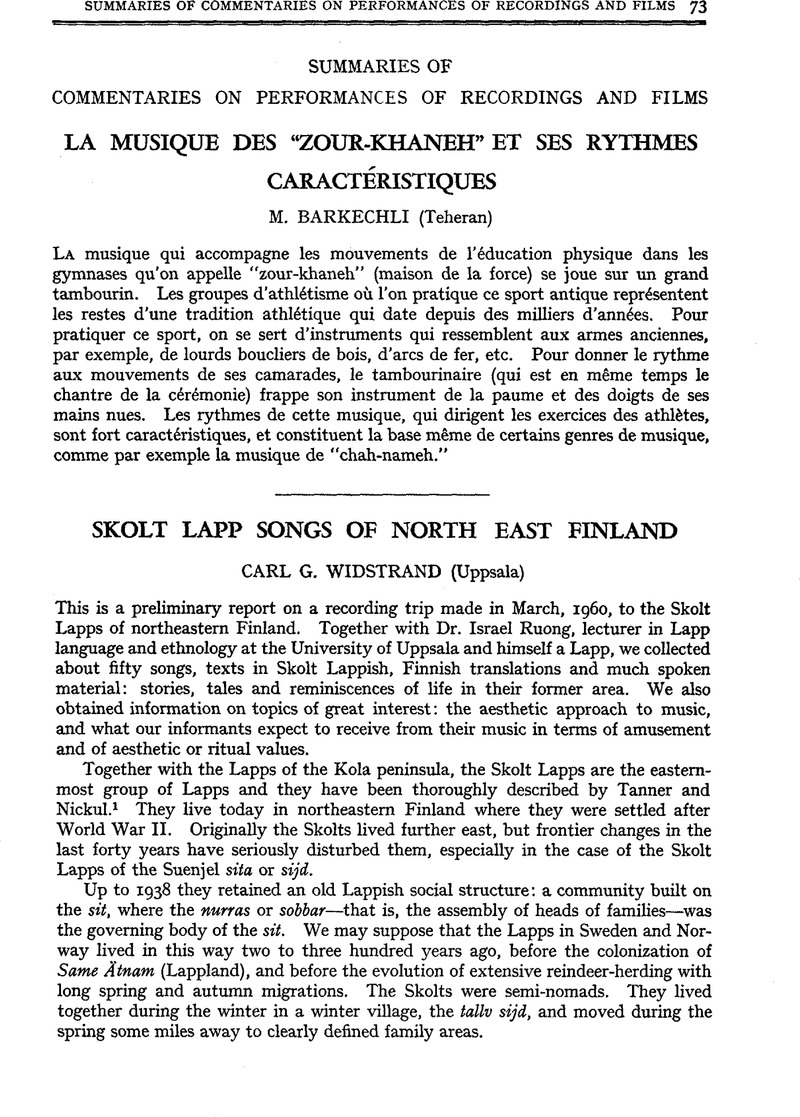No CrossRef data available.
Published online by Cambridge University Press: 07 March 2019

1. The most important works are: K. Nickul, “The Skolt Lapp Community Suenjelsijd in the year 1938,” Acta Laponica 5 (1948); K. Nickul, “Changes in a Lappish Community—a Reflection on Political Events and State Attitude,” Arctica, Essays presented to Åke Campbell, Studia Ethnographica Upsaliensia, 11 (1956); V. Tanner, “Antropogeografiska studier inom Petsamoomradet, 1, Skoltlapparna,” Fennia, 49, 4 (1929); S. Paulaharju, Kolttain mailta, Helsinki, 1921; A. Hamalainen, Koltta-Lappia, Helsinki, 1938. The older Russian sources are to be found in the author's forthcoming paper “Music of the Lapps in Older Scandinavian and Russian Sources.”
2. Sit or sita is the hunting area of a group. Cf. Nesheim, “Finnish hiisi and Lappish siida,” Finnisch-Vgrische Forschungen, 30 (1950).
3. Naska Mošnikov, née Sverlov (1893), is one of the best and most famous informants of the Suenjelsijd. Two of her tales have been published by T. I. Itkonen (Mém. de la Société Finno-Ougrienne, 60, pp. 163-175), and A. Väisänen has published two of her songs, recorded by Uno Harva, in “Pari kolttain sävelmää.,” Kalevalan vuosikirja, 22 (1942).